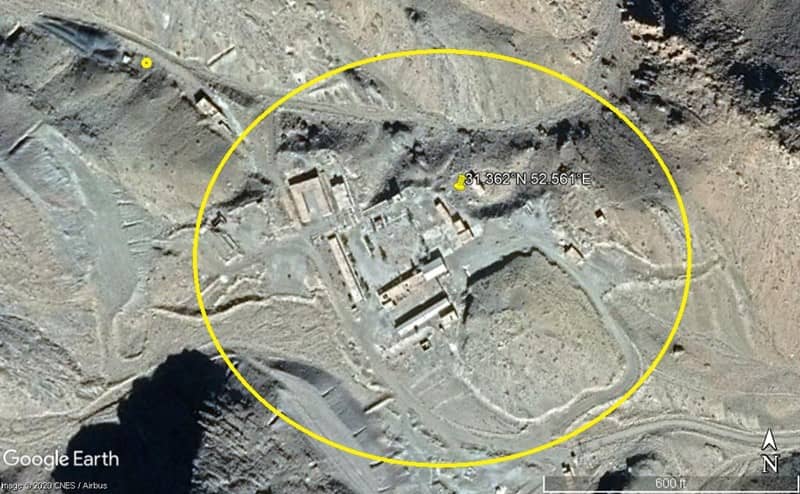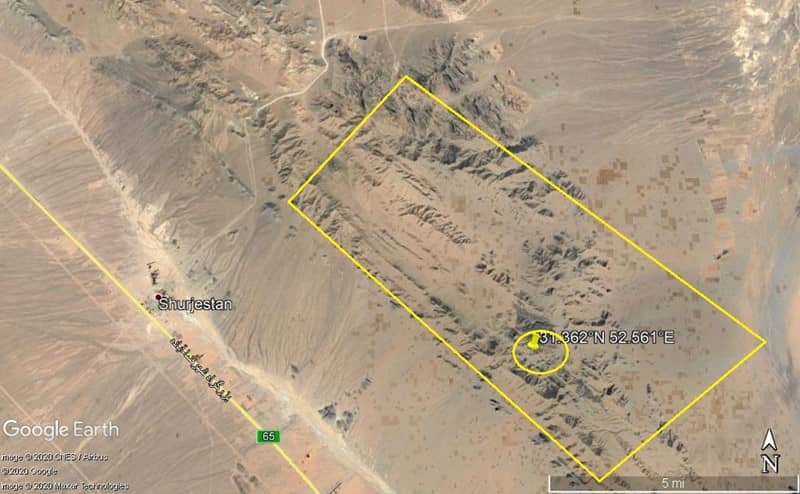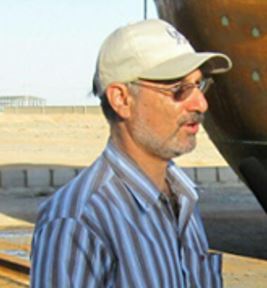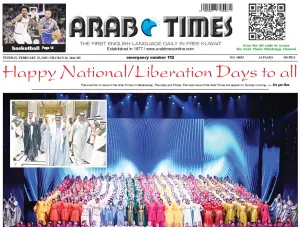03/03/2021
03/03/2021
THE MARIVAN PROJECT: PART OF THE CLERICAL REGIME’S NUCLEAR WEAPONS PROGRAM
According to the latest report by the International Atomic Energy Agency (IAEA) on February 23, 2021, the nuclear watchdog has found anthropogenic uranium particles at two sites in Iran. The Iranian regime had blocked access to these sites to IAEA inspectors for months. The regime has not yet answered the Agency’s questions relating to the possible presence at these locations of nuclear material. The IAEA Director, Rafael Grossi, yesterday in his introductory statement to the IAEA Board of Governors, expressed agency’s deep concerns on finding of undeclared nuclear material in undeclared locations in Iran.

One of the two above mentioned sites is located in the Abadeh region where a project called Marivan has been underway. Today, I will reveal some information about this site, which has been obtained from various entities of the regime through the network of the People’s Mojahedin Organization of Iran or Mujahedin-e Khalq (MEK).
At a high level, this information reveals the following:
- The subject site, which is located north of Abadeh city in Fars province, was built by companies controlled by the Islamic Revolutionary Guard Corps (IRGC) in the mid-1990s under the supervision of the Minister of Defense at the time.
- The site was part of a project managed by the main entity in charge of research and development of nuclear weapons, the Organization of Defensive Innovation and Research (Sazman-e Pazhouheshhaye Novin-e Defa’i), known by its Persian acronym SPND). In the 1990s, this entity was known as AMAD.
- This site was specifically constructed for a project dubbed Marivan, specifically for the use of one of SPND's subdivisions, called METFAZ (Center for Research and Expansion of Technologies on Explosions and Impact). METFAZ is engaged in the research and construction of nuclear high-explosive detonators.
- Dr. Saeed Borji, one of the regime's top explosives and high-impact specialists who for years worked directly under the supervision of Brig. Gen. Mohsen Fakhrizadeh, the key figure in the regime's nuclear weapons project, has been involved in the Marivan project.
- Currently, Borji is in another role, along with some of the most senior experts. He is still conducting research for the nuclear weapons program's explosives and impact fields using a cover
- The process to sanitize the site is very similar to processes implemented in Shian-Lavizan in 2004 as well as a part of the Parchin site in 2012, where there was a special explosive chamber.
So now, allow me to provide more details about the various dimensions of these activities.
According to information obtained by the MEK from inside the Iranian regime, and publicly available information inside Iran, the construction of the subject complex in Abadeh for the Marivan project began in the mid-1990s under the supervision of Major General Ali Shamkhani, then-Minister of Defense and currently the Secretary of the Supreme National Security Council. Companies controlled by the IRGC's Khatam al-Anbia engineering arm executed the construction project. An IRGC engineer with the last name Hashemi Tabar, a project manager for clandestine IRGC projects, managed the construction. He has also led various other projects involving the construction of tunnels and other secret locations for the IRGC.
In order to build this site, the IRGC first took control of a large area of land there. including the stone mines. Since then, local residents are not allowed to enter the area. The northern part of this area is limited to the asphalt road that stretches from the village of Shurjestan to the northeast. This road passes through a relatively mountainous area and ends at a crossroad. The road to the south goes to the stone mines and the nuclear site, and traffic to the south is prohibited and is considered the IRGC's restricted area. The eastern part of this region is also under the control of the IRGC. and is separated by a series of mountains, between the main highway to Abadeh and Shahreza.
Both the project and the site are related to the activities of the “Center for Research and Expansion of Technologies on Explosions and Impact (METFAZ),” which is a subsidiary of SPND (previously AMAD).
To this end, IRGC-affiliated engineering companies built large concrete locations at the site for experiments related to high-impact explosions. Extensive nuclear weapons-related explosions in 2003 at the site were referred to as the Marivan project.
According to the February 23, 2021 IAEA report, this site involved “the possible use and storage of nuclear material where outdoor, conventional explosive testing may have taken place in 2003, including in relation to testing of shielding in preparation for the use of neutron detectors.”
According to internal SPND reports, one of the key METFAZ experts is Saeed Borji, who for years worked directly with IRGC Brig. Gen. Mohsen Fakhrizadeh, the director of SPND (aka AMAD). Fakhrizadeh was killed in the outskirts of Tehran on November 27, 2020.
Among Borji's activities was working with the Ukrainian nuclear scientists Vyacheslav V. Danilenko and Vladimir Padalko on high explosive testing and also on explosive chamber for nuclear weapons in Parchin site (southeast Tehran).
According to SPND’s internal reporting, Saeed Borji and two other SPND experts, Khodadad Meihami and Hossein Ghafouri, worked on a project related to METFAZ in 2011. The location of this specific project in SPND’s internal reports is referred to as Ahmad-Abad. In light of the new evidence revealed about the regime's nuclear activities at this site, Ahmad-Abad is most likely the Abadeh site. An expert from the IRGC-affiliated Imam Hossein University, named Mirtajeddini, was in charge of planning and designing this project.
While Saeed Borji has been one of the most prominent explosives and impact experts and a senior member of the regime's nuclear weapons program, in addition to being one of SPND's managers, according to credible intelligence, he and some other senior SPND experts have formed front companies to conduct their research to advance SPND's objectives.
Among these front companies is the "Azar Afrooz Saeed Limited Liability Company," which was formed in the city of Isfahan in May 2015 to work on "forming and shaping metals using gas." Saeed Borji's position in this company is Vice Chairman of the Board.
The company builds spherical tanks that are shaped to explode quite similar to explosions used in nuclear weapons detonator experiments. These tanks are made of steel frames that are welded latitudinally to create an almost polygonal structure. To make it spherical, the shell is then filled with water and an explosive charge is detonated at the core. The explosion creates a symmetrical internal pressure wave of water that produces a perfectly smooth sphere from the welded polygon.
On the other hand, Saeed Borji and a chemical engineer named Akbar Motalebizadeh, who is also an explosives specialist and another senior manager of SPND, along with several others, established the "Arvin Kimia Abzar Company" in Tehran in March 2019. This front company is involved in the production, purchase, sale, export and import of tools and materials used in drilling and operation of oil wells. Saeed Borji is the chairman of the board and Akbar Motalebizadeh is the managing director of this company.
Prior to setting up this company, Saeed Borji, Akbar Motalebizadeh and Fazlollah Keshan Zare (explosion experts), formed another company called "Parsian Asr Arvin Private Stock Company" in Tehran in December 2015. It is active in the field of "commercial activities and services for the production, purchase, sale, export and import of tools and materials used in the oil industry, drilling and operation of oil wells." Mohsen Fakhrizadeh Mahabadi (the eliminated head of the SPND) acted as the main inspector in this company. Very tellingly, the company was located in the Chamran complex on Langari Street in Tehran, next to the head office of the SPND. The company was dissolved in March 2018. It is worth noting that in response to the IAEA's inquiry into the detonation of multiple explosives at the same time, which had dual use in connection with the explosion of nuclear weapons (EBW), the mullahs' regime falsely claimed that it needs the technology to operate oil wells.
As such, with offsetting up these this front company, Saeed Borji and some other senior officials of SPND created cover for the continuation of activities related to the nuclear weapons program and objectives of SPND.
Another noteworthy point concerns the sanitizing of the Abadeh site.
This site is very similar to other major sites where the body in charge of the regime's nuclear weapons program was conducting serious research and testing, but when the IAEA requested to visit them and sample them, leading the regime to sanitize them.
- The Shian-Lavizan site in northeastern Tehran, where the regime's nuclear weapons organ, AMAD (now SPND) was located, was exposed in May 2003 by the National Council of Resistance of Iran. Following the IAEA's request to visit the site, it was razed to the ground, and when Agency inspectors arrived in 2004, up to 4 meters of soil was turned over. (This is one of four sites mentioned in the IAEA's latest report, where the Agency is still seeking information about their activities). Saeed Borji collaborated with Fakhrizadeh at Shian-Lavizan.
- In the early 2000s, the regime set up an explosive chamber in the Parchin military complex in southeastern Tehran to test powerful explosions related to the production of nuclear weapons. In particular, Saeed Borji was working on these experiments with Ukrainian experts there. When the IAEA requested to visit the site in 2012, the regime began a complete clean-up of the area in Parchin. The Agency finally gained access to this part of Parchin in 2015.
- In relation to the Abadeh site, after the IRGC discovered that the site has been exposed, in July 2019, it abruptly destroyed the facilities on the site. After more than a year since the demolition of this site, the regime only made it accessible on August 26, 2020.
Conclusion
The fact is that the mullahs' regime is seeking to acquire a nuclear weapons as a strategic means to guarantee its survival, and for this reason it has never abandoned its pursuit of a nuclear weapon. This pursuit has continued unabated for the past three decades.
More than 100 revelations by the Iranian Resistance about the sites, centers, projects and experts involved in the program confirm this fact. is part and parcel of the mullahs’ strategy for survival. As the popular dissent is growing in Iran, demonstrated clearly during the nationwide uprising in November 2019, and with the change of balance of power in the region to the mullahs’ detriment, the mullahs need to obtain the bomb more than ever before.
The Iranian regime’s engagement with the world community over its nuclear program over the past three decades has been entwined with duplicity, denial, deception and cover-up. Deception and Duplicity are parts of the regime DNA because, as I said, the ultimate objective of the nuclear program is to obtain the bomb.
Mrs. Maryam Rajavi, the President-elect of the National Council of Resistance of Iran, has stated time and again, including on July 14, 2015 immediately following the initial agreement of P5+1 with the clerical regime, that if the world powers had acted steadfastly, without economic and political considerations, they could have totally contained the regime’s bomb-making apparatus in that round of negotiations. She had warned: Total implementation of the UN Security Council resolutions, in particular total halt of enrichment, accepting the Additional Protocol, and free and unhindered access of the IAEA inspectors to all suspected centers and facilities, are necessary in order for the regime to give up its drive to acquire nuclear weapons. She reiterated her call also on July 14, 2015, hours after the JCPOA was agreed upon.
It is naïve to think that by providing concessions or overlooking its violations, the regime, will change its behavior. This has not happened and will never happen. A leopard never changes spots.
The ultimate solution is regime change by the Iranian people and the organized resistance. If the international community is genuinely seeking to prevent the central banker of terrorism from obtaining nuclear weapons, it must exercise firmness and hold the regime accountable for its action, including its nuclear hide and cheat.




